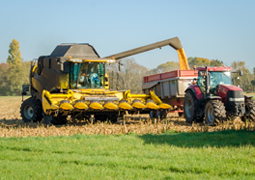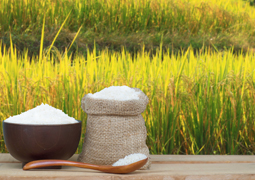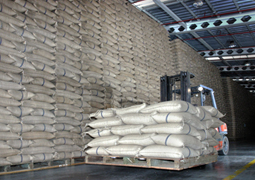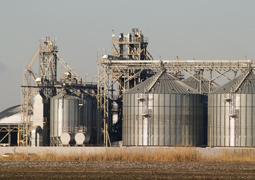We intend to commence rice farming on lowland areas where there are existing farming communities as it is our intention to uplift local farmers to become out growers for our projects and also create employment for them by training them on advanced farming techniques and semi-mechanization.Seeds are essential to realize the yield potential of any rice variety as quality seeds can increase yields by up-to 20%, give lower seeding rates, reduced replanting, and more vigorous early crop growth which reduces weed problems and increases crop resistance to insect pests and diseases. For any rice variety the production process must be carried carefully. From planting seed to harvesting the crop each step should be taken with utmost care and precaution
Land Preparation
It is mandatory to check the land condition before plantation. For highest yield the soil should be in best physical condition and the surface should be in level. The land preparation process involves basic steps like plowing and harrowing to dig up and mixing and leveling of the soil. This process helps in planting the crop at uniform level and at right depth which further helps in weed control process.
Tillage process can be done manually or with the help of tractors or other machinery. Next the process of leveling is carried out to help seedlings to get established easily and helps in management of crops for the production process.
Establishment of Crop
Two main practices are followed for the establishment of crop in the fields. First one is the Transplanting process which is most popular practice across Asia. It is a labour centric approach where seedlings are transferred from seedbed to wet fields. It is an effective method to control weed and required lesser seed.
The second process is Direct seeding which involves the process of broadcasting dry seed or pre germinated seeds and seedlings by hands processing with machine.
Water Management & Usage
Rice production is heavily effected by water availability. For lowland rice the farmers have to maintain the flood like conditions in their fields. Sufficient water is required for good production of rice. For places like rained environment where water supply is scarce, farmers are given various options to deal with dryer condition. Techniques like saturated soil culture, raised bed and alternate drying and wetting are practiced.
Management of Nutrients
This is one of the most critical aspects of rice production. The crop at all level of production has specific nutrient requirements. The water logged fields have nitrogen input from biological sources so farmers need not worry for nitrogen fertilizers for rice production. But to increase yield farmers have to tailor the requirements according to the production.
Healthy Production
For healthy production the crop has to confront wide range of enemies like insects, rodents, weeds, diseases and viruses. It’s on the farmers to decide which process safeguards the production of the crops. They follow various processes for pest management for the rice production.
Harvest
The cycle usually takes 105-150 days from establishment of the crop. The process of harvesting includes cutting, stacking, handling, threshing, cleaning and finally hauling. The process of harvesting can be done manually as well as mechanically.



